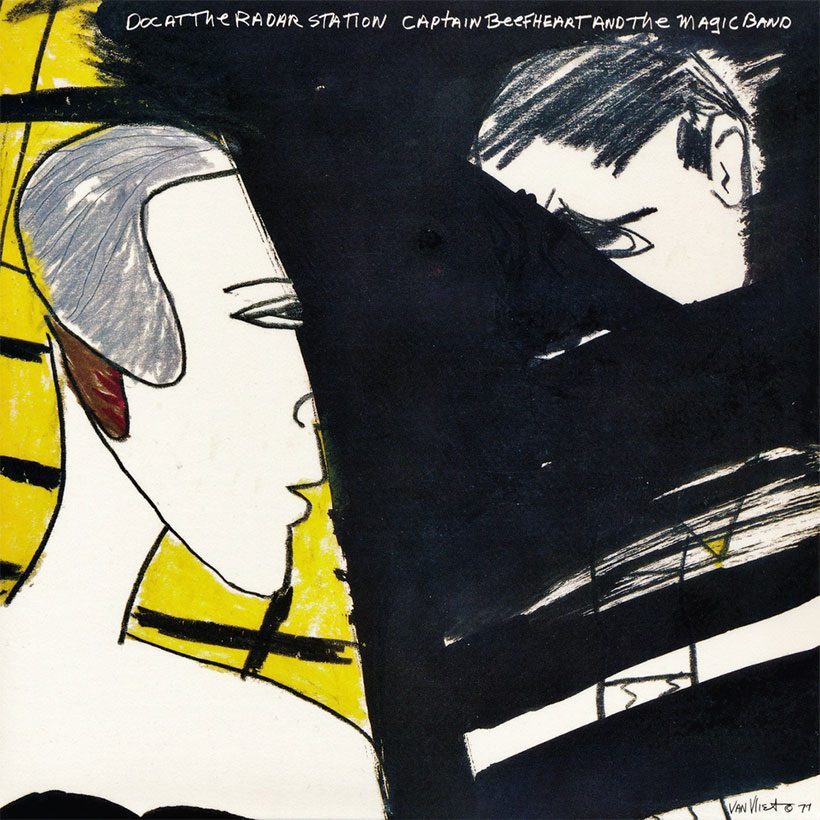‘Doc At The Radar Station’: How Captain Beefheart Came Back Fighting Fit
Released in 1980, ‘Doc At The Radar Station’ found him revitalized, influencing the new wave and releasing a work hailed as one of his finest.

As the 80s rolled around, many iconic artists from the 60s would struggle to find their place in the decade. Captain Beefheart, however, though boasting a 60s discography that re-wrote what was possible for a mere three-minute song, came back revitalized. The punk and new wave scenes of the late 70s and early 80s had embraced his creative freedoms, while Beefheart himself, after seemingly turning his back on boundary-pushing music, unleashed a late-period Magic Band that asserted his credentials as one of rock’s true visionaries. They super-charged themselves for 1980’s Doc At The Radar Station, released in August 1980 as his penultimate album. Portentously, it boasted an artwork painted by Beefheart himself – the final album to feature his own work on the sleeve, as if signposting Beefheart’s eventual decision to retire from music and pursue painting in the middle of the decade.
Listen to Doc At The Radar Station now.
Doc At The Radar Station marked the first Magic Band credit for New York art-rock icon Gary Lucas – continued evidence of Beefheart’s influence on NYC’s downtown art scene (it’s an influence that never left: the album’s opening track, “Hot Head,” is a clear ancestor to Yeah Yeah Yeahs’ early outings). Further youthful bite came courtesy of Eric Drew Feldman, a multi-instrumentalist who had joined the fold for 1976’s Shiny Beast (Bat Chain Puller), and who would go on to perform with Pixies and PJ Harvey – two artists who wore their Beefheart influences openly.
A nod to Beefheart’s hallowed Trout Mask Replica-era band came with John French’s return since his defection in 1972. French picked up marimba, slide guitar, bass, and drums across “Ashtray Heart” and “Sheriff Of Hong Kong,” and it’s perhaps unsurprising that both boast the deceptively unhinged mania that marks much of Beefheart’s 60s output, but with an extra heft thanks to the new blood involved.
This melding of old and new is arguably what makes Doc At The Radar Station such a success: some of the material dates back to the Trout Mask era, while other outings (“A Carrot Is As Close As A Rabbit Gets To A Diamond,” “Flavor Bud Living,” “Brickbats”) received initial try-outs during the shelved Bat Chain Puller sessions of 1976. With such a forceful Magic Band attacking top-tier material with gusto, there was no way Doc At The Radar Station could fail.
Indeed, in their review Rolling Stone lauded “music of such heat, strength, and passion that many listeners will get trampled,” though also noted that the songs “rarely shatter into headlong chaos without first showing the comely, formal compositions they might have been.” It was an astute observation. Beefheart might have divided his fanbase with his outwardly commercial 70s outings Unconditionally Guaranteed and Bluejeans & Moonbeams, but it’s true that Doc At The Radar Station also makes clear the genuine songcraft that goes into even his most outlandish material.
It had taken almost two decades, but perhaps the world had finally caught up with him. Rolling Stone reasonably pointed out that, really, the Captain was “bugged by the same things that plague us all: bad relationships, bad technology, bad government,” while The New York Times was sufficiently moved to hail album closer “Making Love To A Vampire With A Monkey On My Knee” as “probably the most extravagantly original and perfectly realized creation of Beefheart’s career.”
Almost three decades on, as a penultimate salvo, Doc At The Radar Station still warrants such positive diagnoses.













paul+Vincent+zecchino
January 7, 2021 at 2:52 am
The Captain’s finest album ever. Magnificent. A masterpiece whose energy fueled the Roaring Eighties.
Jon grillo
August 1, 2022 at 7:01 pm
I have a black and white poster from the album producer,and a album.Great time frame.